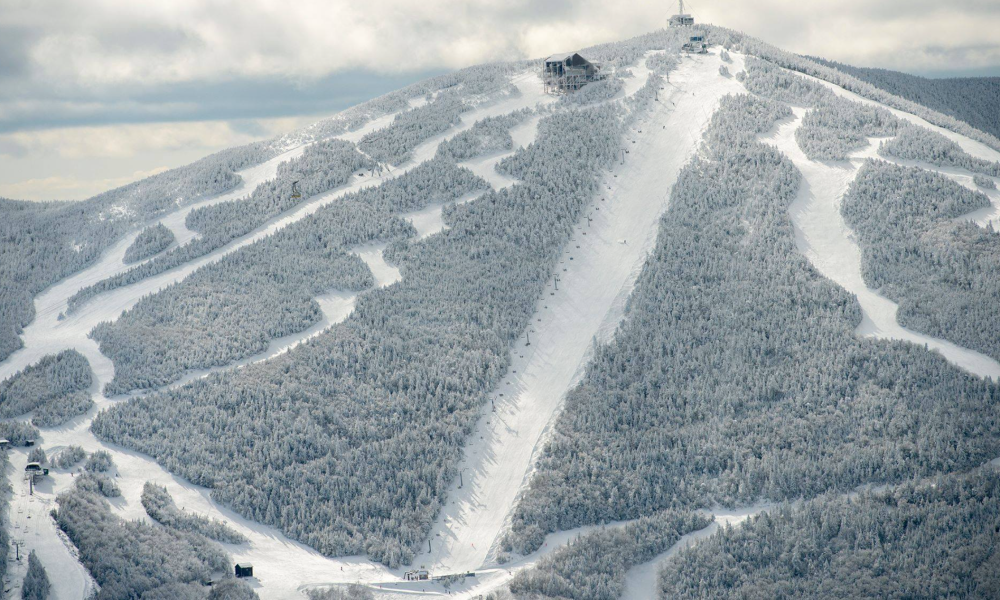
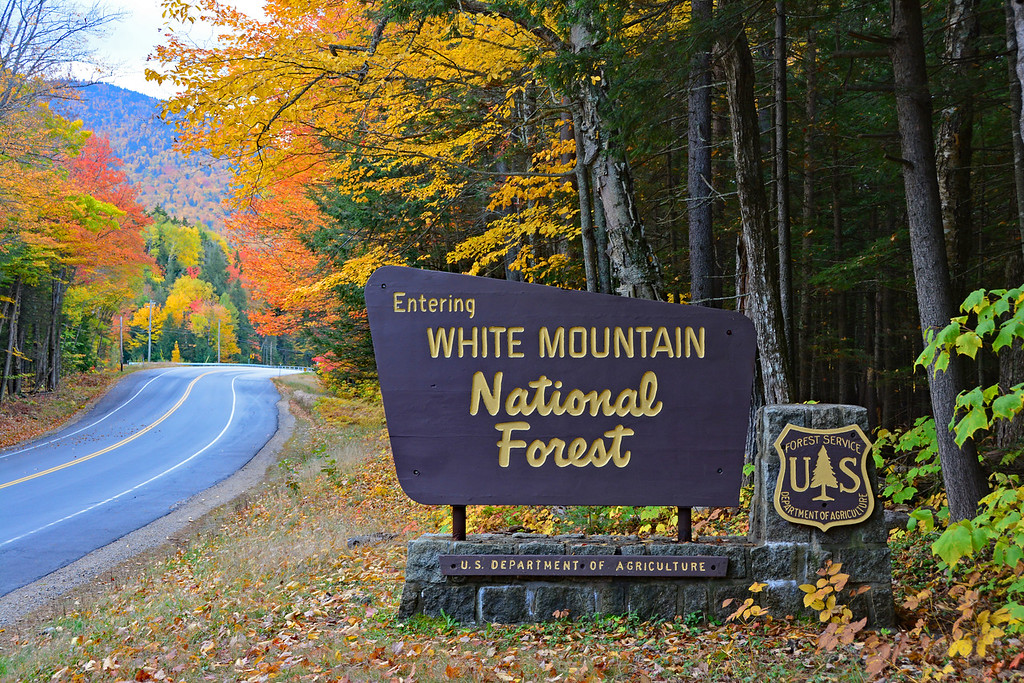
The White Mountains are a mountain range covering about a quarter of the state of New Hampshire and a small portion of western Maine in the United States. They are part of the northern Appalachian Mountains and the most rugged mountains in New England. The range is heavily visited due to its proximity to Boston, New York City, and Montreal. Most of the area is public land, including the White Mountain National Forest and a number of state parks. An estimated six million visitors visit the region yearly.
Its most famous mountain is 6,288-foot (1,917 m) Mount Washington, which is the highest peak in the Northeastern U.S. and for 76 years held the record for fastest surface wind gust in the world (231 miles per hour (372 km/h) in 1934). Mount Washington is part of a line of summits, the Presidential Range, that are named after U.S. presidents and other prominent Americans. The Mount Washington Auto Road and Mount Washington Cog Railway ascend the range’s highest peak, which hosts a visitor center and weather observatory.
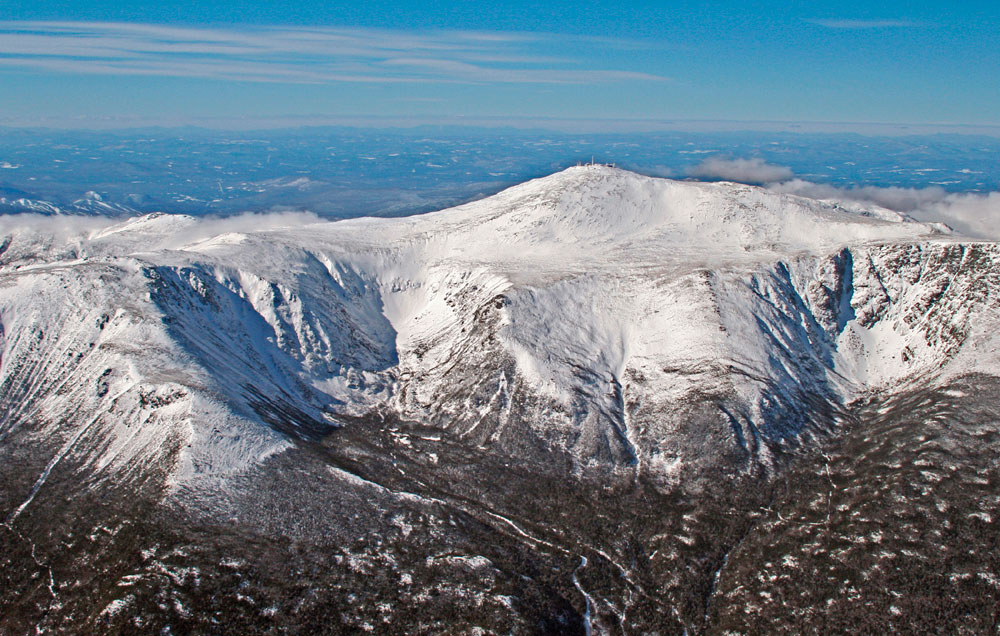

The White Mountains also include the Franconia Range, Sandwich Range, Carter-Moriah Range and Kinsman Range in New Hampshire, and the Mahoosuc Range straddling the border between it and Maine. In all, there are 48 peaks within New Hampshire as well as one (Old Speck Mountain) in Maine over 4,000 feet (1,200 m), known as the four-thousand footers.
The White Mountain National Forest, formed in 1911 after passage of the Weeks Act, includes most of the mountain range and now covers 800,000 acres (3,200 km2) in New Hampshire and western Maine. The range is crossed north–south by U.S. Route 3 and Interstate 93 through Franconia Notch and New Hampshire Route 16 through Pinkham Notch, and east–west by the Kancamagus Highway (part of New Hampshire Route 112) through Kancamagus Pass and U.S. Route 302 through Crawford Notch. Many of these highways are designated as scenic routes.
The Whites are known for a system of alpine huts for hikers operated by the Appalachian Mountain Club. The Appalachian Trail crosses the area from southwest to northeast.
The White Mountains region is also home to numerous hiking attractions through the various river gorges, ravines, and caves in the area. The Flume Gorge, Lost River Reservation and Polar Caves Park all provide moderate hikes that one can complete in a few hours.
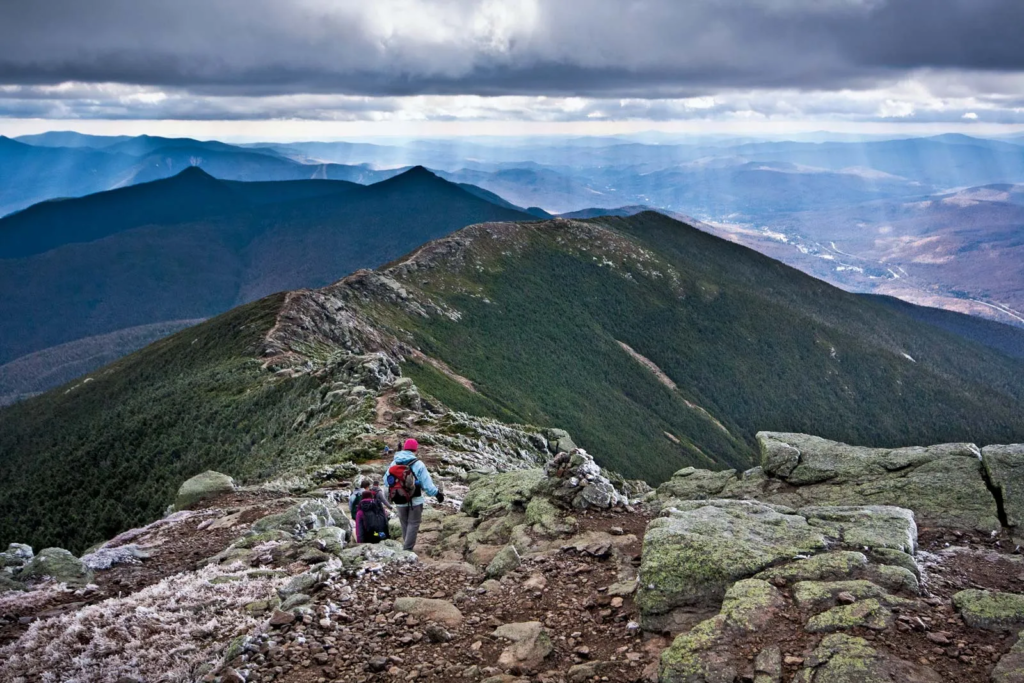
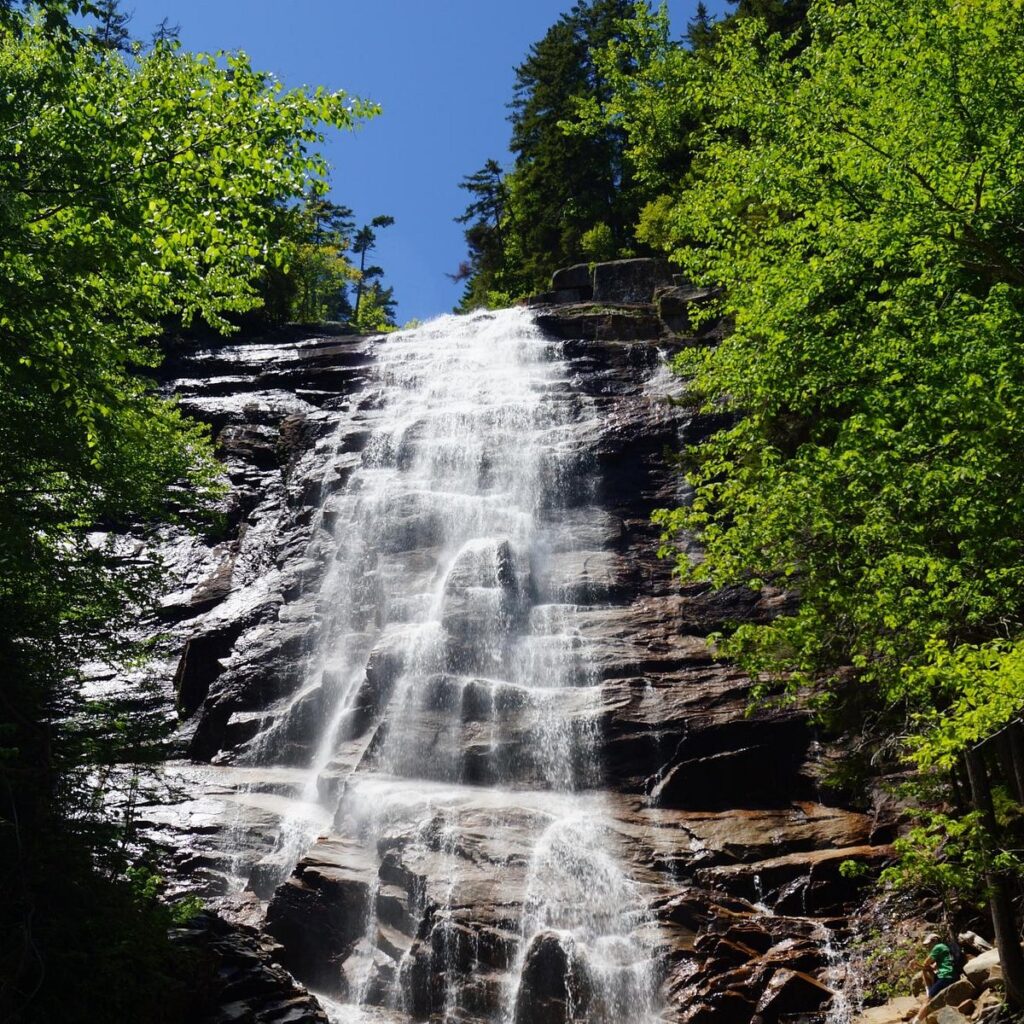
Heavily visited Arethusa Falls, the second tallest waterfall in New Hampshire, lies on a southwest flank of Crawford Notch. The Old Man of the Mountain, a rock formation on Cannon Mountain that resembled the craggy profile of a man’s face, was a White Mountain landmark until it fell in May 2003. It remains the state symbol of New Hampshire.
The range also includes a natural feature dubbed “The Basin”, consisting of a granite bowl, 20 feet (6 m) in diameter, fed by a waterfall, worn smooth by the Pemigewasset River. The areas around The Basin are popular spots for swimming in the cold water.
Skiing is a popular attraction in the area. Cannon Mountain Ski Area, Loon Mountain Ski Resort, Attitash Mountain Resort, Wildcat Mountain Ski Area, Bretton Woods Mountain Resort, and Waterville Valley Resort are all popular winter ski resorts, and many of them provide year-round outdoor activities such as bridle paths, hiking trails, alpine slides, and the like. The Mount Washington Hotel remains one of the few early twentieth century grand hotels still in use.
